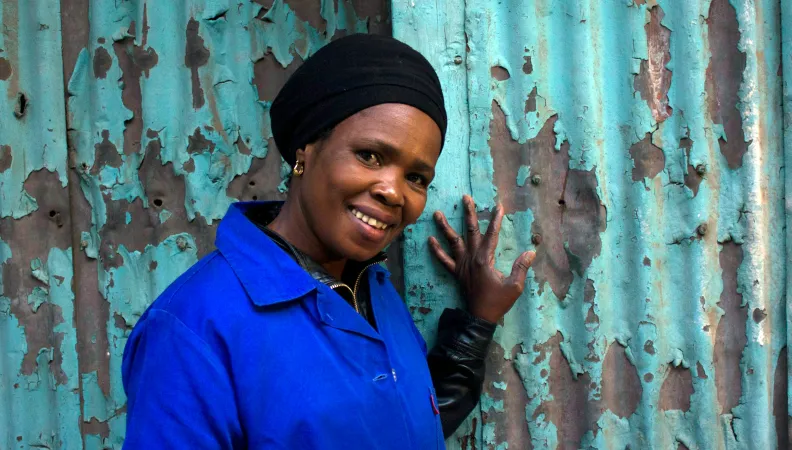 To what extent do carbon credits and voluntary carbon markets really contribute to the achievement of the objectives of the Paris Climate Agreement? By opening the "black box" of these instruments, this study proposes a critical analysis of the economic paradigm in which they fit and identifies ways to reconceptualize them through an environmental accounting framework.
To what extent do carbon credits and voluntary carbon markets really contribute to the achievement of the objectives of the Paris Climate Agreement? By opening the "black box" of these instruments, this study proposes a critical analysis of the economic paradigm in which they fit and identifies ways to reconceptualize them through an environmental accounting framework.
Context
Voluntary carbon markets (VCMs), created in 2000, are carbon credit trading mechanisms that allow companies, in particular, to voluntarily offset their carbon footprint. They can be traced back to the Kyoto Protocol, which introduced the principle of trading greenhouse gas emission reduction credits (or ‘CO2 equivalents’) in 1997. However, they are distinct from ‘carbon allowances’, which are part of a compliance scheme rather than a voluntary one.
These voluntary markets have grown significantly in recent years. One of the driving forces behind this development has been the implementation of initiatives to achieve ‘Net-Zero’ targets – the vast majority of which are voluntary, although some compliance mechanisms allow the use of carbon credits (e.g. the Corsia mechanism in the aviation sector). All this should contribute to the development of an ecosystem for trading the regulatory environmental service of carbon capture, in support of the objective of reducing consumption of the ‘global carbon budget’, itself set by the IPCC.
However, voluntary carbon markets have been the subject of criticism and controversy since their inception, and questions remain as to whether they will actually help to achieve the objectives of the Paris Agreements.
Goal
Based on an analysis of the existing situation and the conceptual framework that currently structures the voluntary carbon markets and carbon credits, the study identifies the pitfalls not only of these markets and their organisation, but also of the instruments traded and the underlying paradigms that validate the current structuring of these markets.
The aim is to put forward proposals to ensure that the realities of the climate and the available carbon budget are better integrated into the operation of voluntary carbon markets, so that they become genuine tools for helping companies to make the climate transition. For example, it answers fundamental questions such as: should I offset, what part and what volume of my emissions are legitimate for offsetting, should I contribute to maintaining climate regulation services without offsetting?
Method
Using an accounting and management approach, the study questions current approaches to voluntary carbon markets, centred on the neoclassical economic paradigm. It promotes a ‘climate debt’ approach, as well as the management of this ‘climate debt’ through carbon budgets to be managed by means of preservation activities whose primary function must be to reduce greenhouse gas (GHG) emissions.
Using an ecological accounting method, the study describes how companies should contribute to global climate debt reduction beyond the voluntary carbon markets, and, through their organisational processes, addresses the levels of accountability for the various emission sources (scopes 1, 2, 3).
Lessons learned
The study shows that carbon credits and voluntary carbon markets are disconnected from climate and organisational realities. Opening the ‘black box’ of VCMs shows that behind this name lie several conceptions of these instruments, and therefore several ways of using and accounting for them within companies. What's more, the tools used by companies are not linked to the objectives of national or international climate policies, so they cannot be used to steer progress towards a global low-carbon trajectory.
To reconnect these instruments with climate policies, these markets need to be thought outside the neoclassical conceptual framework that gave rise to the other carbon management tools. The study proposes principles for reorganising these markets around a ‘managerial’ approach (using in particular the C.A.R.E. ecological accounting and management framework). It makes it possible to design VCMs to ensure compliance with carbon budgets allocated between companies, based on the global carbon budget defined by the IPCC. It thus gives theoretical and operational meaning to the ‘avoid/reduce/compensate’ sequence and to the use of compensation for ‘residual emissions’.
In other words, in order to collectively stay below 1.5°C of global warming, companies would each have to respect a given carbon budget each year (the carbon credit not being a licence to pollute or an emission right, but rather an instrument to be included in a strategy to limit greenhouse gas emissions). This would make it possible to support businesses while reconnecting the tool (VCMs), businesses and climate policies, from the perspective of global governance of the climate system.
Find out more:
- Download the research paper (in French): Crédits carbone et marché carbone volontaire : analyse critique au regard des politiques climatiques et des sciences de gestion, et proposition d'un cadrage comptable écologique des crédits carbone
- Watch the research webinar (in French): Pertinence des marchés volontaires de carbone : aujourd'hui et dans un futur neutre en carbone
Contact:
- Djedjiga Kachenoura, Research Officer on Climate Finance, AFD
 Extreme weather events resulting from the effects of climate change coupled with a global call for countries to reduce their greenhouse gas (GHG) emissions imply that the transition to a “green” economy is non-negotiable. The societal and policy discussions have moved on to trying to understand the transition possibilities and the economic and social implications of these in each country’s context. This research project will focus on the case of South Africa.
Extreme weather events resulting from the effects of climate change coupled with a global call for countries to reduce their greenhouse gas (GHG) emissions imply that the transition to a “green” economy is non-negotiable. The societal and policy discussions have moved on to trying to understand the transition possibilities and the economic and social implications of these in each country’s context. This research project will focus on the case of South Africa.
Context
South Africa is one of the largest GHG emitting countries due to its heavy reliance on coal for most of its energy needs. The South African government is cognisant of the fact that shifting away from carbon-intensive forms of technology to more sustainable ways of production means that some jobs will be destroyed, and new ones will be created. A concern therefore for policy makers is ensuring that the transition is just and that it will not exacerbate existing inequalities.
South Africa comes into this employment transition discussion facing a triple challenge: persistent high unemployment, inequality, and poverty. This situation has worsened since the 2007-2008 financial crisis and was further exacerbated by the recent COVID-19 pandemic. This complicates the discussion of an optimal social transition to a “green” economy.
This project is part of a wider research program on the just transition in South Africa, conducted with several South African research centres and in close collaboration with the South African authorities.
See also: Research on inequalities
Goal
The project will carry out a study of the South African labour market with the aim of identifying the proportion and distribution of workers engaged in “green” jobs and “brown” jobs – in other words, jobs that are ecologically sustainable and jobs that are not. It will also examine the possibilities of transitioning labour from brown jobs into low emitting sectors.
Method
We will measure green intensity as the share of total tasks in an occupation that are green. We will also identify the share of workers in green jobs using employment information from surveys such as the Quarterly Labour Force Surveys (QLFSs) and the Census. Using industry level information on pollution, we will go further to identify occupations more likely to be in highly polluting sectors than in any other sectors. This will be described as brown jobs. Next, we will utilise occupational tasks, skills, and knowledge information from the O*NET dataset to identify important skills for brown and green jobs. This will enable us to estimate the probability of transitioning workers to green jobs. Finally, to map the location of green jobs, we will use employment information from the Census, the Community Survey, and the Spatial Tax data.
Contact:
- Anda David, research officer, AFD
